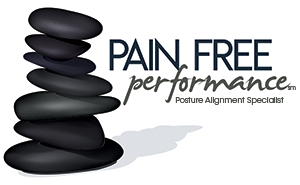Over the holidays, we’ve had a number of clients come in to the clinic with sciatic pain. This symptom can present in very different ways. For some, it’s a painful sacro-iliac joint that stays in that one hip area and perhaps into the gluteal muscle. Others will feel a twinge of pain in the hip and then a pain in the calf of the same leg. The classic sciatic symptom is pain in the hip and all the way down the back of the leg. At times, this pain can feel debilitating – if you have had that pain, you know what I mean. Take a deep breath, there is hope without taking pain relievers or having back surgery.
The sciatic nerve is the main nerve that feeds all the other nerves through your legs. Think of it as the main electrical feed that comes out of your spine at the top of the sacrum goes through the pelvis and down the back of both your legs. Where that nerve comes out of the spine (on either side) and crosses through the pelvis (either side) there is not a lot of clearance. This makes it imperative that your pelvis is bilateral and symmetrical and your spine is equally bilateral and centered on top of the pelvis.
Sounds simple, right? Well it is and it isn’t. The pelvis is 3 bones and they can be off in any of the 3 planes of movement and the spine sitting on top that can be off in those same 3 planes. What holds all this in the proper position? Muscles. Lots of them. And, they all need to work equally as a team. In order to work as that team, they need a wide variety of movement. More and more in our culture and environment, we are getting less movement and less variety of movement.
We think driving to the gym and doing a cross-training work out every day is enough. That is good, but nothing compared to what our bodies really need – we need to run, jump, twist, throw, climb, push and pull. Ideally, we need to do these things for hours every day. We are not meant to sit still.
Stand normally in front of a full length mirror and look to see where your feet and knees point. Your feet and knee position will tell you a lot about your hips. If your knees and feet point straight ahead equally, then your pelvis is in a good position; if one or both of either your feet or knees point in different directions, possibly both halves of your pelvis is out of position. You can change that with a bit of work and the right exercises to get the muscles working appropriately again.
That is what the Egoscue method is all about. It is what we do at Pain Free Performance. Call us or come and see us and we can enable you to alleviate your sciatic pain.
